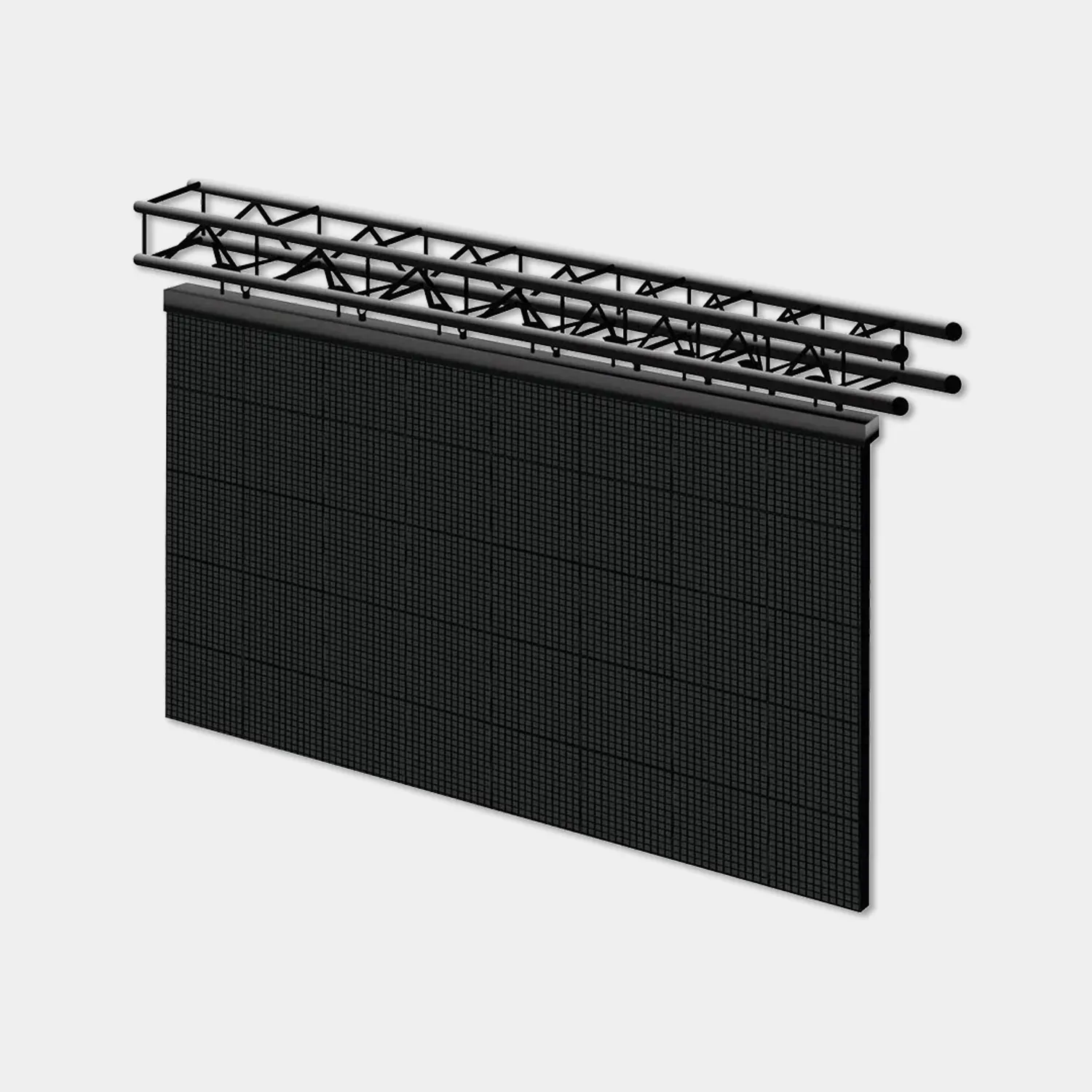
Get a Quote
How Do P5 and P10 LED Displays Differ?
Pixel Pitch Explained
Pixel pitch is the physical distance between individual pixels on an LED display. It's a crucial determinant of image quality and clarity. Measured in millimeters, pixel pitch directly influences the display's resolution and viewing angle.
Understanding Pixel Pitch
Pixel pitch refers to the distance between the centers of two adjacent pixels on the display screen. A smaller pixel pitch indicates higher pixel density, resulting in sharper images and better resolution. Conversely, a larger pixel pitch means lower pixel density, potentially leading to decreased image clarity, especially at closer viewing distances.
Measurement in Millimeters
Pixel pitch is measured in millimeters and represents the distance between the center of one pixel to the center of the adjacent pixel. For example, a pixel pitch of 5mm means there is a 5mm gap between each pixel on the display.
Relationship to Display Resolution and Viewing Angle
Pixel pitch plays a significant role in determining the display's resolution and viewing angle. A smaller pixel pitch results in higher resolution and a narrower viewing angle, ideal for applications requiring detailed images viewed up close. Conversely, a larger pixel pitch offers lower resolution but a wider viewing angle, suitable for larger displays viewed from a distance.
Comparative Analysis: P5 vs. P10 LED Displays
Pixel Composition and Separating Distance
When comparing P5 and P10 LED displays, one significant difference lies in their pixel composition and the separating distance between pixels.
- P5 LED Display: This type of display boasts a 5mm separating distance between adjacent pixels. The smaller separating distance contributes to enhanced image quality and reduced distortion, particularly for content with high definition or lower resolution.
- P10 LED Display: In contrast, P10 LED displays feature a larger 10mm separating distance between pixels. While still relatively short compared to other pixel pitches, this larger distance can result in certain sections of images appearing less sharp.
Impact on Image Quality
The differing pixel composition and separating distance between P5 and P10 LED displays directly impact image quality in several ways.
- Clarity and Sharpness: With its smaller pixel pitch, the P5 LED display offers superior clarity and sharpness, making it ideal for applications requiring detailed visuals. On the other hand, the P10 LED display may exhibit slightly reduced sharpness due to its larger pixel pitch.
- Resolution and Pixel Density: The pixel density of each display type also varies. P5 LED displays, with their smaller pixel pitch, boast higher resolution and pixel density, resulting in crisper images with more detail. Meanwhile, P10 LED displays, while still capable of delivering quality visuals, may have slightly lower resolution and pixel density due to their larger pixel pitch.
Factors Influencing Display Selection
When choosing between P5 and P10 LED displays, various factors come into play to ensure the optimal display for your needs.
Application Considerations
- Indoor vs. Outdoor Usage: The intended application of the LED display is crucial. P5 LED displays, with their finer pixel pitch and superior image quality, are well-suited for indoor environments such as commercial spaces, industrial facilities, and residential settings. On the other hand, P10 LED displays, with their slightly larger pixel pitch, are better suited for outdoor applications like advertising billboards and signage screens, where viewing distances are greater.
- Suitable Environments and Settings: Consider the environmental conditions where the display will be installed. Indoor displays are protected from harsh weather conditions, while outdoor displays must withstand elements like rain, wind, and sunlight. Ensure the chosen display is suitable for the intended environment to prolong its lifespan and maintain optimal performance.
Viewing Distance and Viewing Angle
- Effect on Image Visibility: Viewing distance plays a significant role in determining the appropriate pixel pitch for an LED display. For applications where viewers are at a closer distance to the screen, such as indoor settings, a finer pixel pitch like P5 is preferable to ensure clear and detailed images. Conversely, outdoor displays viewed from a distance may benefit from a slightly larger pixel pitch like P10, which offers adequate visibility without compromising image quality.
- Optimal Pixel Pitch for Different Distances: Understanding the relationship between viewing distance and pixel pitch is essential for selecting the right LED display. For shorter viewing distances, a finer pixel pitch is recommended to maintain image clarity and sharpness. In contrast, displays intended for longer viewing distances can utilize a larger pixel pitch while still delivering satisfactory visuals. Consider the typical viewing distances in your specific application to determine the optimal pixel pitch for your LED display.
Choosing the Right Pixel Pitch
Selecting the appropriate pixel pitch is crucial for ensuring optimal performance and image quality for your LED display.
Understanding Display Resolution
- Content Type and Size: Consider the type and size of content you intend to display on your LED screen. For applications requiring detailed images or small text, such as advertising or informational displays, a finer pixel pitch like P5 is recommended to ensure clarity and readability. On the other hand, larger displays or applications with less detailed content may benefit from a slightly larger pixel pitch like P10.
- Importance of Pixel Density: Pixel density, determined by the pixel pitch, directly impacts image quality and resolution. Higher pixel density, achieved with a finer pixel pitch, results in sharper and more detailed images. Lower pixel density, associated with a larger pixel pitch, may still provide satisfactory visuals, especially for applications viewed from a distance.
Considerations for Brightness and Transparency
- Impact on Image Clarity: Brightness levels play a crucial role in determining image clarity and visibility, especially in outdoor environments or areas with high ambient light. LED displays with higher brightness levels can maintain image clarity even in bright conditions, ensuring visibility and readability for viewers.
- Relationship to Viewing Conditions: Consider the viewing conditions in which the LED display will be installed. Factors such as ambient light, viewing distance, and viewing angle can influence the perceived brightness and clarity of the display. Opt for a pixel pitch and brightness level that aligns with the specific viewing conditions to ensure optimal performance and visibility.
By carefully considering these factors, you can choose the right pixel pitch for your LED display, ensuring optimal image quality and performance for your specific application and viewing conditions.
Conclusion
When it comes to selecting the perfect LED display for your needs, factors such as pixel pitch, resolution, and viewing conditions play a pivotal role in ensuring optimal performance and image quality. Understanding the differences between pixel pitches like P5 and P10 can guide you in making informed decisions that align with your specific requirements.
Whether you're looking for a fine pixel pitch display for detailed indoor visuals or a larger pixel pitch display for outdoor advertising, EACHINLED has you covered. EACHINLED offers a wide range of high-quality LED displays designed to meet various indoor and outdoor applications. With their commitment to innovation, reliability, and customer satisfaction, EACHINLED stands out as a trusted provider in the industry. Experience the difference with EACHINLED LED displays today!


